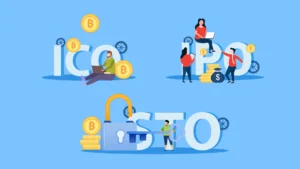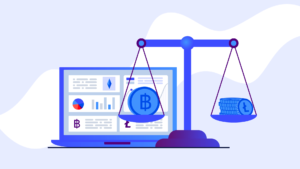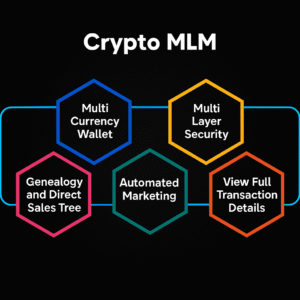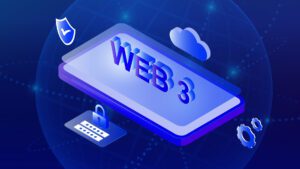
The internet has come a long way, evolving from simple web pages in Web 1.0 to the interactive, user-generated content of Web 2.0. Now, we’re entering a new phase often called Web 3.0 and Web3. While these terms sound similar, they refer to different ideas about how the Internet should work in the future. In this blog, we’ll explore these two visions, their features, and how they impact development and services.
Understanding Web 3.0 vs Web3
The terms Web 3.0 and Web3 are often used interchangeably, but they have distinct meanings. Understanding these concepts is crucial as they represent different visions for the future of the internet.
What is Web 3.0?
Web 3.0 is a term that describes the next generation of the internet, which aims to create a more intelligent and interconnected online experience. It focuses on the use of technologies like artificial intelligence (AI), machine learning, and semantic web capabilities to enable machines to understand and process information more effectively. In Web 3.0, users can expect a more personalized and interactive online experience, where data is interconnected and accessible across various platforms. This version of the internet aims to eliminate intermediaries, allowing users to have more control over their data and interactions.
What is Web3?
Web3, on the other hand, is a movement centered around decentralization and blockchain technology. It envisions an internet where users own their data, identities, and digital assets. Web3 applications are typically built on blockchain platforms, which provide transparency, security, and trust without the need for centralized authorities. Web3 emphasizes peer-to-peer interactions, enabling users to engage directly with each other. This approach aims to empower users, reduce reliance on traditional corporations, and create a more equitable digital economy.
Characteristics of Web 3.0 vs. Web3 Technology
Web 3.0 and Web3 are two ideas about how the internet will change. Web 3.0 aims to make the internet smarter and more connected. It uses cool technologies like artificial intelligence (AI) to help computers understand information better. This makes it easier for users to find what they need and enjoy a more personalized experience online. In contrast, Web3 focuses on giving power back to users. It uses Blockchain Technology, which allows people to own their data and digital identities. Web3 features include direct connections between users, smart contracts that automatically carry out tasks without needing a middleman, and tokenizing digital assets, which opens up new ways for people to engage in the digital world.
web3 development services are important for building decentralized applications (dApps), creating smart contracts, and ensuring secure Blockchain Solutions. These services help businesses take advantage of this new internet. While Web 3.0 makes the web easier to use and smarter, Web3 focuses on user security and ownership, leading to a fairer online experience for everyone.
Difference Between Web 3.0 vs. Web3 for the Internet’s Future
-
Definition
Web 3.0 is the next version of the internet that aims to make it smarter and more connected. It focuses on using advanced technologies to improve how we find and use information online.
Web3 is a decentralized version of the internet that gives users more control over their data and digital identities. It uses blockchain technology to create a safe environment for online interactions. -
Focus
The main goal of Web 3.0 is to enhance user experience by providing smarter services and personalized content. It wants to make the internet more intuitive so that users can easily access what they need.
Web3, on the other hand, focuses on empowering users. It aims to give people ownership of their data, allowing them to decide how it is used and shared. -
Technology
Web 3.0 uses technologies like artificial intelligence (AI) and machine learning. These tools help computers understand and learn from user behavior, making searches and interactions more relevant.
Web3 is built on blockchain technology, which ensures secure and transparent transactions. This technology helps users trust each other because it records all actions in a way that cannot be changed. -
Data Ownership
In Web 3.0, users have limited control over their data. Big companies often own this data, which can raise privacy concerns.
In contrast, Web3 allows users full ownership of their data. People can choose how their information is shared, providing them with more privacy and control. -
Interactivity
Web 3.0 aims to connect different platforms better. This means that users can easily find and share information across various websites and applications.
Web3 encourages direct interactions between users. By removing middlemen like banks or large companies, it allows people to engage with one another more freely. -
Smart Contracts
Web 3.0 does not focus heavily on automation. While it may use smart contracts, the main aim is to improve the user experience and provide relevant content.
Web3 relies on smart contracts, which are agreements written in code. These contracts automatically execute when certain conditions are met, ensuring trust without needing a third party. -
Tokenization
In Web 3.0, the emphasis is not on digital asset ownership. Instead, it focuses on enhancing user engagement and providing valuable information.
Web3, however, promotes the idea of tokenization, allowing users to own, trade, and manage digital assets easily. This creates new ways for users to invest and participate in the online economy. -
User Empowerment
Web 3.0 works to enhance personalization by understanding user needs better. It aims to create a more satisfying online experience tailored to individual preferences.
Web3 emphasizes user control and decentralization. It creates an internet where users have greater authority over their online presence and interactions. -
Example Applications
Examples of Web 3.0 include smart AI search engines that provide tailored results and platforms that adapt to user behavior for a better experience.
Examples of Web3 include decentralized applications (dApps) that run on blockchain, cryptocurrency platforms for direct transactions, and marketplaces for trading digital assets.
Future of Web 3.0 vs. Web3
The future of web 3.0 looks bright as it aims to make the internet smarter and easier to use. With technologies like artificial intelligence and machine learning, we can expect more personalized experiences, better search results, and seamless connections between different platforms. Web3 development solutions will be essential in creating applications that use these technologies to improve how we interact online.
On the other hand, Web3 is focused on giving users more control over their data and online identities. This means more privacy, direct transactions between users, and true ownership of digital assets through blockchain technology. Together, Web 3.0 and Web3 will change the internet for the better. While Web 3.0 enhances user engagement and functionality, Web3 empowers users and promotes decentralization, leading to a safer and more user-friendly online environment.







